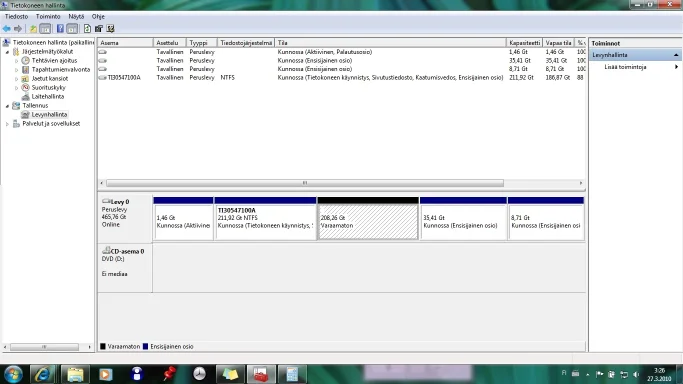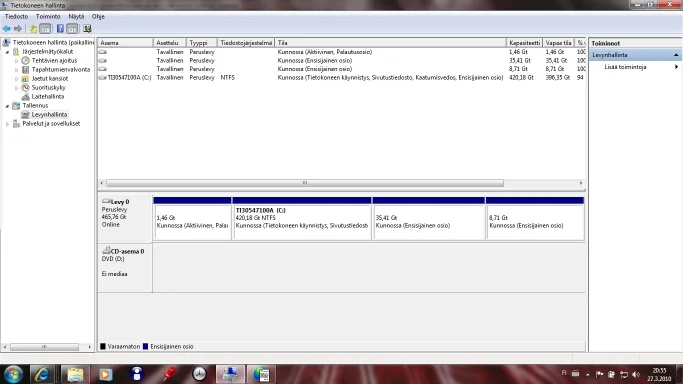- Thread Author
- #1
I have a brand new Toshiba Qosmio portable computer with Windows 7 pre-installed in the "C" (=the only hard) drive.
I wanted to create an "E" drive and partition, so in Disk Management I focused the largest partition and selected "Shrink Drive". As a result, I got 208,26 GB of unallocated space. However, when I proceed to create a new drive from that unallocated space, I get the notification "There is not enough space available on the disk(s) to complete this operation."
Therefore, I now have 208 gigabytes of unallocated space ("Varaamaton" in the attached screenshot; I'm using a Finnish version of Windows 7) that I for some reason cannot utilize. What can I do to regain the space?
I don't know what the two partitions to the right of the unallocated space contain - one sized 35,41 GB and the other 8,71 GB. (The leftmost partition - 1,46 GB - is for restoring Windows.)
Any help would be greatly appreciated. Thank you.
Vesa
I wanted to create an "E" drive and partition, so in Disk Management I focused the largest partition and selected "Shrink Drive". As a result, I got 208,26 GB of unallocated space. However, when I proceed to create a new drive from that unallocated space, I get the notification "There is not enough space available on the disk(s) to complete this operation."
Therefore, I now have 208 gigabytes of unallocated space ("Varaamaton" in the attached screenshot; I'm using a Finnish version of Windows 7) that I for some reason cannot utilize. What can I do to regain the space?
I don't know what the two partitions to the right of the unallocated space contain - one sized 35,41 GB and the other 8,71 GB. (The leftmost partition - 1,46 GB - is for restoring Windows.)
Any help would be greatly appreciated. Thank you.
Vesa


